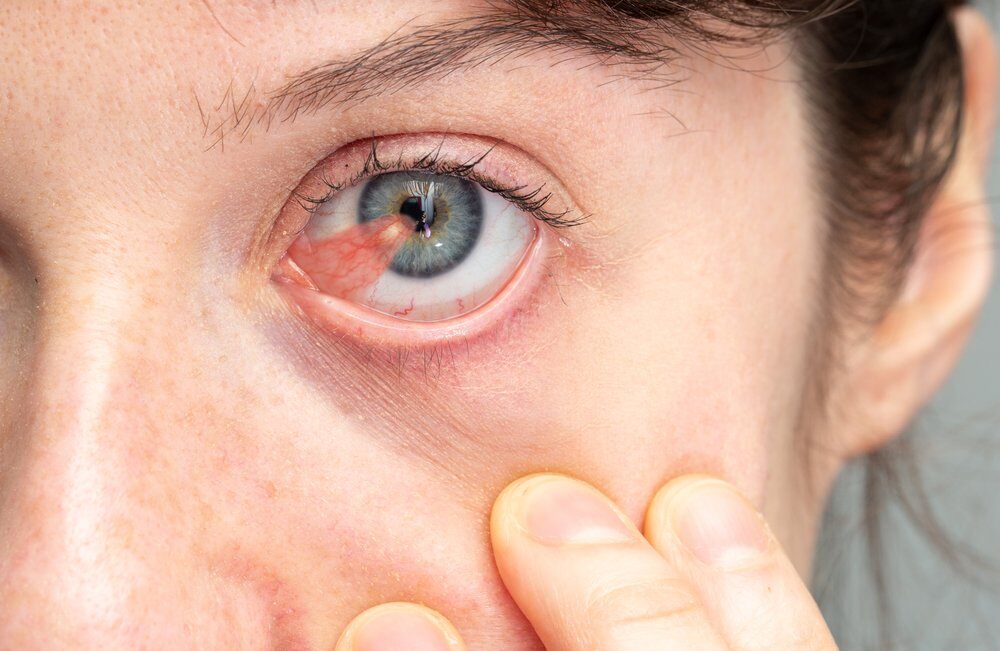One of the common abnormalities of the eye is yellowish or red bumps that can occur on the white of the eye in the corners. They can become elevated over time and have a slightly yellowish or red and vascular appearance. These are called pinguecula when they are limited to the white of the eye (the sclera) and pterygia when they begin to grow onto the clear part of the eye (the cornea). They are caused by ultraviolet light from the sun and can be made worse by windy, dusty, and dry environments. In the way that our skin reacts to the sun by tanning, the surface of the eyes reacts to the sun by forming these fibrous scars. We see that as people live closer to the equator where there is more sun, it is more common for the population to have these lesions.

If you’ve lived in Houston, Texas for several years, it’s very likely that you at least have mild pingueculas. In their mild forms patients experience redness, dryness, and irritation. They can lead to patients not liking the appearance of their eyes because they seem either too red or “not as white and bright as they used to be”. In severe forms, pterygia can cause severe astigmatism, scarring, and even block vision. The good news is that these lesions can be removed. I use techniques to remove pterygia to substantially reduce the chances of them returning. Below are before and after photos for pterygium surgery. It’s amazing that it is the same eye.
Pterygium before surgery and after surgery:

Avoiding recurrent ocular irritation and getting a cool pair of UVA, UV B blocking sunglasses are things you can do to prevent these conditions.
Come to the clinic so we can evaluate your ocular surface and get you set up with a great pair of sunglasses to protect your eyes from the Houston sun!


